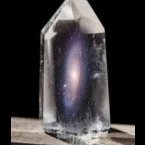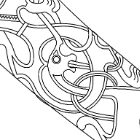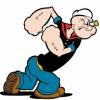-
Posts
1,267 -
Joined
-
Last visited
Reputation Activity
-

-

-

-
 AnobiumPunctatum reacted to bigpetr in Gokstad c. 900 AD by bigpetr - 1:48 - CARD - viking ship
AnobiumPunctatum reacted to bigpetr in Gokstad c. 900 AD by bigpetr - 1:48 - CARD - viking ship
Jig is ready to serve, I forgot to include few important guidelines to the jig, so I had to plot them by hand:
Then I assembled some visible ribs and aplied the grooves to the edges. Some test paint was used to see if the grooves will be visible when painted . They are, so I will continue to do them on the rest of the ship.
-
 AnobiumPunctatum reacted to garyshipwright in HMS Montague 1779 by garyshipwright - 74-gun Alfred-class
AnobiumPunctatum reacted to garyshipwright in HMS Montague 1779 by garyshipwright - 74-gun Alfred-class
Hello every one. Here is a small update on my build showing the stages that making a cast knee goes through to become a cast knee for my build. Also a few photos showing the fore mast partner on the upper gun deck beams.The photo also show's the bolts being installed and is made up of 10 piece's of wood. Hope you enjoy the photo's
-
 AnobiumPunctatum reacted to obi in Le Coureur 1776 by obi - 1:48 - lugger
AnobiumPunctatum reacted to obi in Le Coureur 1776 by obi - 1:48 - lugger
hello
next to the ship I made cannon (bronze material)
Only 8 pieces and make took me a couple of weeks.
All of the cannons are made by me
-
 AnobiumPunctatum reacted to tlevine in Swallow 1779 by tlevine - FINISHED - 1:48 scale
AnobiumPunctatum reacted to tlevine in Swallow 1779 by tlevine - FINISHED - 1:48 scale
Finally, the second planking belt is completed. My biggest decision was whether to have the aft planking feather out at the transom or leave it erose. I saw examples from this era using both approaches and could not make out the detail on the model. I decided to continue to feather the planks. Those of you who are wiser than I, please correct me if I am wrong, as it would not take too much work to go the other route. I removed the transom planking and will re-plank it after the hull planking is completed. Only six more rows to go!
-
 AnobiumPunctatum reacted to tlevine in Swallow 1779 by tlevine - FINISHED - 1:48 scale
AnobiumPunctatum reacted to tlevine in Swallow 1779 by tlevine - FINISHED - 1:48 scale
I reached a milestone today: the first planking belt has been completed. So far, I am pleased with the appearance. For anyone toying with the idea of building a clinker- planked hull, I am finding this a lot more difficult than carvel construction. There is no room for error and edge-bending that last half-millimeter does not work the way is would on a carvel hull. I have found that the easiest way to secure the planks during gluing-up is with planking screws, placing a piece of scrap between the cross-piece of the planking screw and the plank to prevent denting. My layout has a butt joint at frame M. I decided that this was too far forward and placed a basswood filler between frames K and M.
The first belt has four rows of planking; the upper two belts will each have five. So far it appears that a stealer will not be necessary but I will have a dropped plank in the upper belt.
-

-
 AnobiumPunctatum got a reaction from J11 in Wütender Hund by ccoyle - FINISHED - Shipyard - 1/72
AnobiumPunctatum got a reaction from J11 in Wütender Hund by ccoyle - FINISHED - Shipyard - 1/72
Congratulations, just a beautyful model.
-
 AnobiumPunctatum reacted to KrisWood in Oseberg Ship by KrisWood - 1:25 - Vibeke Bischoff Plans
AnobiumPunctatum reacted to KrisWood in Oseberg Ship by KrisWood - 1:25 - Vibeke Bischoff Plans
I went and got more 1/32" basswood yesterday. I'm back in business! Pics to come soon.
-
 AnobiumPunctatum got a reaction from thibaultron in Medieval longship by bolin - FINISHED - 1:30 - based on reconstruction Helga Holm
AnobiumPunctatum got a reaction from thibaultron in Medieval longship by bolin - FINISHED - 1:30 - based on reconstruction Helga Holm
I will take a seat and follow your log with great interest.
-
 AnobiumPunctatum reacted to bolin in Medieval longship by bolin - FINISHED - 1:30 - based on reconstruction Helga Holm
AnobiumPunctatum reacted to bolin in Medieval longship by bolin - FINISHED - 1:30 - based on reconstruction Helga Holm
This will start the build log for the model I have been planning to build since I decided to start model ship building. However, I realized that I needed to acquire some skill and get experience before I could attempt it. With some models under my west I now feel ready to start.
The subject is medieval long-ship from around 1325 that was found in Stockholm in 1979. The ships size and unusual form caught the attention by marine archeologists and the public, so a reconstruction was built. The reconstruction was launched in 1983, and was named Helga Holm (literally "holy islet" which is a word play of the island where the wreck was found "helgeandsholmen" = "the islet of the Holy spirit") . The first years it was the Maritime History Museum (Sjöhistoriska museet) in Stockholm that owned and sailed the ship in order to perform "experimental archeology". Later on the ownership was transferred to an association that has sailed and maintained the ship since then, mostly for recreation. I have been participating and sailing the reconstruction for about 18 years.
Unfortunately the ship is now becoming so old, and requiring so large and costly renovations, that we can no longer maintain here as a sailing ship. The plan is to place her on land in the city of Sigtuna north of Stockholm.
The original reconstruction was documented in one archeological report and a more popularly written book. The report includes the reconstruction plans that I will use as the basis for my model. Both the report and the book documents the building of the reconstruction and will help with different detailed aspects. I will also (at least for a while longer) have access to the reconstruction for any specific measurements.
One question I have been asking myself, will I be building a model of the original ship based on the information gained by the reconstruction, or will I build model of the reconstruction? I have concluded that it will be the former. For the hull shape I will not be able to improve on the reconstructions results, but for the rig and some other details I plan to do a bit of my own research and might come up with other conclusions.
I plan to go slow on this build, and I will use my build of a Sloop from Roslagen as practice for certain aspects. In particular regarding building the clinker hull. On the other hand I would like to start the build while I still have access to the reconstruction for additional measurements etc.
Cheers
-
 AnobiumPunctatum got a reaction from WalrusGuy in HMS Triton 1771 by AnobiumPunctatum - scale 1/48
AnobiumPunctatum got a reaction from WalrusGuy in HMS Triton 1771 by AnobiumPunctatum - scale 1/48
After finishing the ensemble I got the information that the step between stem and knee of the head doesn't exist. There is a drawing in Steel's Naval Architecture, that shows this detail. I am missing this book in my library and follwed the design which David descirbes in the Swan Class series by my first attempt.
Now I've reworked the comstruction:
-
 AnobiumPunctatum got a reaction from WalrusGuy in HMS Triton 1771 by AnobiumPunctatum - scale 1/48
AnobiumPunctatum got a reaction from WalrusGuy in HMS Triton 1771 by AnobiumPunctatum - scale 1/48
Actually, the weather is too nice to work in the shipyard...
...but a little bit I did manage to do this weekend.
The two prepared parts of the "Knee of the Head" were carefully fitted to the steven and then glued together.
Next, all templates were carefully removed and the fit was checked again.
To make it easier for me to glue the Knee of the Head to the stem I drilled three holes of 2.0mm and fixed the component with brass wire. At this step the fit was checked one last time and some slight corrections were made.
Now the Knee of the Head was sandes into shape. It tapers from the keel to the upper corner of the leading edge from about 10.5'' (according to SR 9.5'') to 7.5''; the trailing edge has a constant width of 10.5''. To transfer the measurements to the wood, I made small templates in CAD and glued them to the component. The stern changes its width from 10.5'' at the transition to the keel to 16'' at the top edge. I have also made a template for this. Because of all the sanding I forgot to take pictures of this stage of construction.
The last three pictures show the finished ensemble. On the second last picture you can hopefully see the wooden dowels I glued to the model instead of the brass rods.
-
 AnobiumPunctatum got a reaction from WalrusGuy in HMS Triton 1771 by AnobiumPunctatum - scale 1/48
AnobiumPunctatum got a reaction from WalrusGuy in HMS Triton 1771 by AnobiumPunctatum - scale 1/48
Thanks for the Likes.
Today I prepared the "Knee of the Head". I have divided this one into two parts to make it easier for me to adapt to the stem later. First the chocks of the upper part were adjusted and glued together. For the caulking was again single layer cellulose used. To compensate for small tolerances, the templates were again exchanged for a single one after completion of the assembly. The main piece and the other components of the upper assembly were then added.
The lower assembly was then adapted and assembled.
The following two pictures show the current status:
Since my vacation is coming to an end, the shipyard is now being exchanged for the home office. Nevertheless I hope to finish the "Knee of the Head" next weekend.
-
 AnobiumPunctatum got a reaction from KrisWood in HMS Triton 1771 by AnobiumPunctatum - scale 1/48
AnobiumPunctatum got a reaction from KrisWood in HMS Triton 1771 by AnobiumPunctatum - scale 1/48
Further with the "Upper stem". There are only two parts that have to be glued to the lower part of the stem, which was already shown in the last part. The issue is complicated by the fact that even tiny angular deviations in the "Joint" lead to deviations at the upper end of the component. Aggravating is the fact that the component is about 1.7mm thicker than the keel
At first I built a small jig, which fixes the keel during the adjustment work. To check the position of the components, a template was aligned on the working surface and fixed with adhesive tape. Thin wooden plates were placed under the keel to compensate for half of the height difference.
Next, the two components of the "upper stem" were glued together. A little more material was deliberately left at the sides to compensate for the construction tolerances later. Then the joint between the new component and the "Lower stem" was adjusted with my milling machine, chisels and sandpaper until the upper end of the stem was in line with the template. Now the components could be glued together.
The old templates were removed and a new template was glued and aligned. Finally, the stem was sanded into shape.
-
 AnobiumPunctatum got a reaction from WalrusGuy in HMS Triton 1771 by AnobiumPunctatum - scale 1/48
AnobiumPunctatum got a reaction from WalrusGuy in HMS Triton 1771 by AnobiumPunctatum - scale 1/48
The description of my reconstruction you will find here.
On Easter Monday the time had finally come. The keel of his majesty's frigate HMS Triton was laid.
First the 5 components for the keel were sawn out.
I have simplified the design of the joints considerably, as they will be completely covered later on by further components. I will continue to apply this principle during the further construction in order to adapt the building as far as possible to my craftsmanship.
The first cliff that had to be overcome is the joint between keel and lower stem. I worked this out with my milling machine and chisels.
After I had attached the wrong keel, the joints have to be dowelled. These dowels are a bit too big for the chosen scale, but I cannot draw pear wood thinner than 0.8 mm. I know that many modellers swear by bamboo, but I find pear on the finished model more discreet.
I have simulated the caulking with single-ply pulp.
-
 AnobiumPunctatum got a reaction from popeye the sailor in Hanse Kogge by Catopower - FINISHED - Shipyard - 1/72 scale - CARD
AnobiumPunctatum got a reaction from popeye the sailor in Hanse Kogge by Catopower - FINISHED - Shipyard - 1/72 scale - CARD
That's a nice idea. I am also building the cog "Wütender Hund". But if someone needs some picture of the Kamper Kogge, I made some pictures during a small trip in my holidays.
-
 AnobiumPunctatum got a reaction from FriedClams in Wütender Hund by ccoyle - FINISHED - Shipyard - 1/72
AnobiumPunctatum got a reaction from FriedClams in Wütender Hund by ccoyle - FINISHED - Shipyard - 1/72
Congratulations, just a beautyful model.
-
 AnobiumPunctatum got a reaction from Louie da fly in Oseberg Ship by KrisWood - 1:25 - Vibeke Bischoff Plans
AnobiumPunctatum got a reaction from Louie da fly in Oseberg Ship by KrisWood - 1:25 - Vibeke Bischoff Plans
Do you want to build the keel from different layers? The only point for me to use a layer is the really complex design of the stemdecoration. If you have a colser look to the original stem you can see that it is very thin at front.
I hope that you need to much time, to start your build log. I am very interested so see, how you proceed.
-
 AnobiumPunctatum got a reaction from Louie da fly in Oseberg Ship by KrisWood - 1:25 - Vibeke Bischoff Plans
AnobiumPunctatum got a reaction from Louie da fly in Oseberg Ship by KrisWood - 1:25 - Vibeke Bischoff Plans
I understand what you mean. That's also the reason, why I didn't start building the Oseberg or one of the other bigger viking ships. The stopped Skuldelev III was a not so nice experience. But I love this kind of klinker build ships.
But before I go back, I will finish my HMS Triton; but this project needs some more years to complete.
-
 AnobiumPunctatum got a reaction from mtaylor in Oseberg Ship by KrisWood - 1:25 - Vibeke Bischoff Plans
AnobiumPunctatum got a reaction from mtaylor in Oseberg Ship by KrisWood - 1:25 - Vibeke Bischoff Plans
I understand what you mean. That's also the reason, why I didn't start building the Oseberg or one of the other bigger viking ships. The stopped Skuldelev III was a not so nice experience. But I love this kind of klinker build ships.
But before I go back, I will finish my HMS Triton; but this project needs some more years to complete.
-
 AnobiumPunctatum got a reaction from KrisWood in Oseberg Ship by KrisWood - 1:25 - Vibeke Bischoff Plans
AnobiumPunctatum got a reaction from KrisWood in Oseberg Ship by KrisWood - 1:25 - Vibeke Bischoff Plans
I understand what you mean. That's also the reason, why I didn't start building the Oseberg or one of the other bigger viking ships. The stopped Skuldelev III was a not so nice experience. But I love this kind of klinker build ships.
But before I go back, I will finish my HMS Triton; but this project needs some more years to complete.
-
 AnobiumPunctatum reacted to ccoyle in Wütender Hund by ccoyle - FINISHED - Shipyard - 1/72
AnobiumPunctatum reacted to ccoyle in Wütender Hund by ccoyle - FINISHED - Shipyard - 1/72
Already did. You even hit the 'like' button! We're gettin' old, Mark! 😉





.thumb.jpg.62d1d69fed1f32364417cb1f9cdeb009.jpg)



